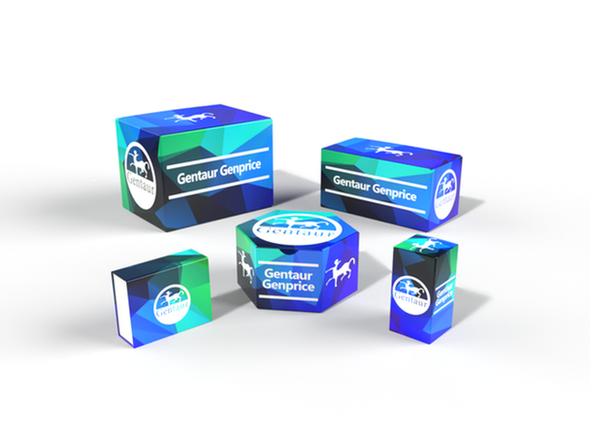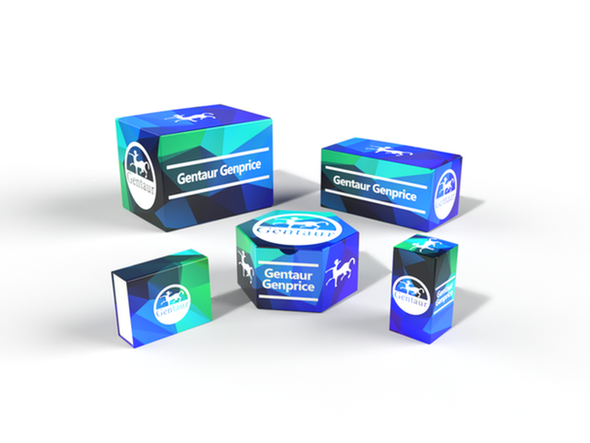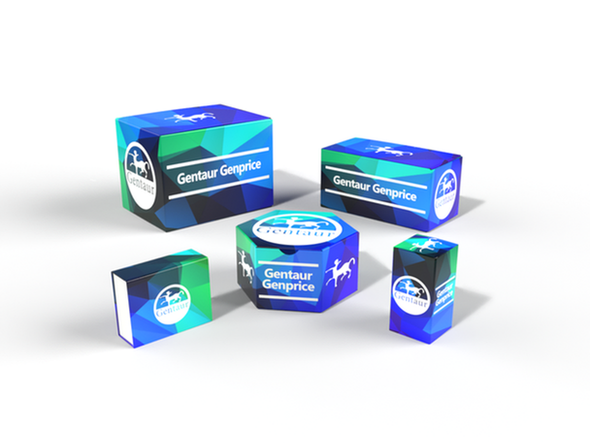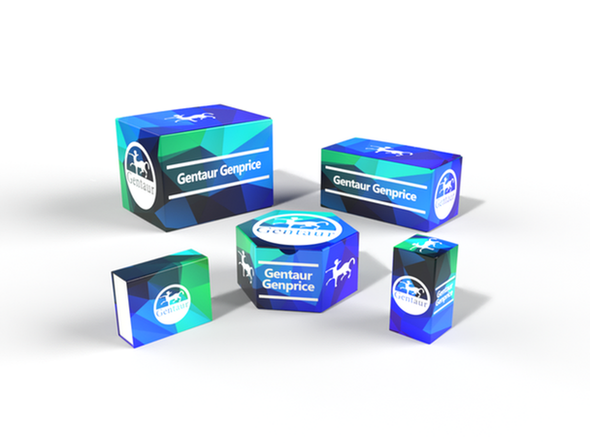749
Rat Sodium/hydrogen exchanger 3 (SLC9A3) ELISA Kit | KTE100242
- SKU:
- 749-KTE100242
- Availability:
- Usually ships in 5 working days
Description
Rat Sodium/hydrogen exchanger 3 (SLC9A3) ELISA Kit | KTE100242 | Gentaur UK, US & Europe Distribution
Application: This Rat Sodium/hydrogen exchanger 3 (SLC9A3) ELISA Kit employs a two-site sandwich ELISA to quantitate SLC9A3 in samples. An antibody specific for SLC9A3 has been pre-coated onto a microplate. Standards and samples are pipetted into the wells and anySLC9A3 present is bound by the immobilized antibody. After removing any unbound substances, a biotin-conjugated antibody specific for SLC9A3 is added to the wells. After washing, Streptavidin conjugated Horseradish Peroxidase (HRP) is added to the wells. Following a wash to remove any unbound avidin-enzyme reagent, a substrate solution is added to the wells and color develops in proportion to the amount of SLC9A3 bound in the initial step. The color development is stopped and the intensity of the color is measured.
Detection Method: Colorimetric
Conjugate: N/A
Sample Type: Cell culture supernatants#Serum#Plasma#Other biological fluids
Assay Type: Multiple steps standard sandwich ELISA assay with a working time of 3-5 hours. It depends on the experience of the operation person.
Kit Component: • Rat Sodium/hydrogen exchanger 3 microplate
• Rat Sodium/hydrogen exchanger 3 standard
• Rat Sodium/hydrogen exchanger 3 detect antibody
• Streptavidin-HRP
• Standard diluent
• Assay buffer
• HRP substrate
• Stop solution
• Wash buffer
• Plate covers
Features & Benefits: Rat Sodium/hydrogen exchanger 3 (SLC9A3) ELISA Kit has high sensitivity and excellent specificity for detection of Rat SLC9A3. No significant cross-reactivity or interference between Rat SLC9A3 and analogues was observed.
Calibration Range: Please inquire
Limit Of Detection: Please inquire
Usage Note: • Do not mix components from different kit lots or use reagents beyond the kit expiration date.
• Allow all reagents to warm to room temperature for at least 30 minutes before opening.
• Pre-rinse the pipet tip with reagent, use fresh pipet tips for each sample, standard and reagent to avoid contamination.
• Unused wells must be kept desiccated at 4 °C in the sealed bag provided.
• Mix Thoroughly is very important for the result. It is recommended using low frequency oscillator or slight hand shaking every 10 minutes.
• It is recommended that all samples and standards be assayed in duplicate or triplicate.
Storage Instruction: The unopened kit should be stored at 2 - 8°C. After opening, please store refer to protocols.
Shipping: Gel pack with blue ice.
Precaution The product listed herein is for research use only and is not intended for use in human or clinical diagnosis. Suggested applications of our products are not recommendations to use our products in violation of any patent or as a license. We cannot be responsible for patent infringements or other violations that may occur with the use of this product.
Background: An apical membrane Na+/H+ exchanger is involved in transepithelial, electroneutral Na+ absorption across renal and intestinal epithelia. The apical Na+/H+ exchange activity is pharmacologically distinct from the basolateral Na+/H+ exchange activity, notably in terms of response to kinase regulation and in addition by the diuretic amiloride. NHE1 (SLC9A1), the first of these exchangers to be cloned, localizes by immunocytochemical studies only to the basolateral membranes of polarized epithelial cells. Transfection of OKP cells with dominant-negative PYK2 or small interfering PYK2 duplex RNA blocked acid activation of NHE3, whereas neither had an effect on glucocorticoid activation of NHE3. Dominant-negative PYK2 also blocked acid activation of SRC kinase, which is required for acid regulation of NHE3.
Alternative Names: SLC9A3; MGC126718; MGC126720; NHE3; solute carrier family 9 (sodium/hydrogen exchanger) ; isoform 3
Search name: SLC9A3; MGC126718; MGC126720; NHE3; solute carrier family 9 (sodium/hydrogen exchanger) ; isoform 3
Tag: SLC9A3










